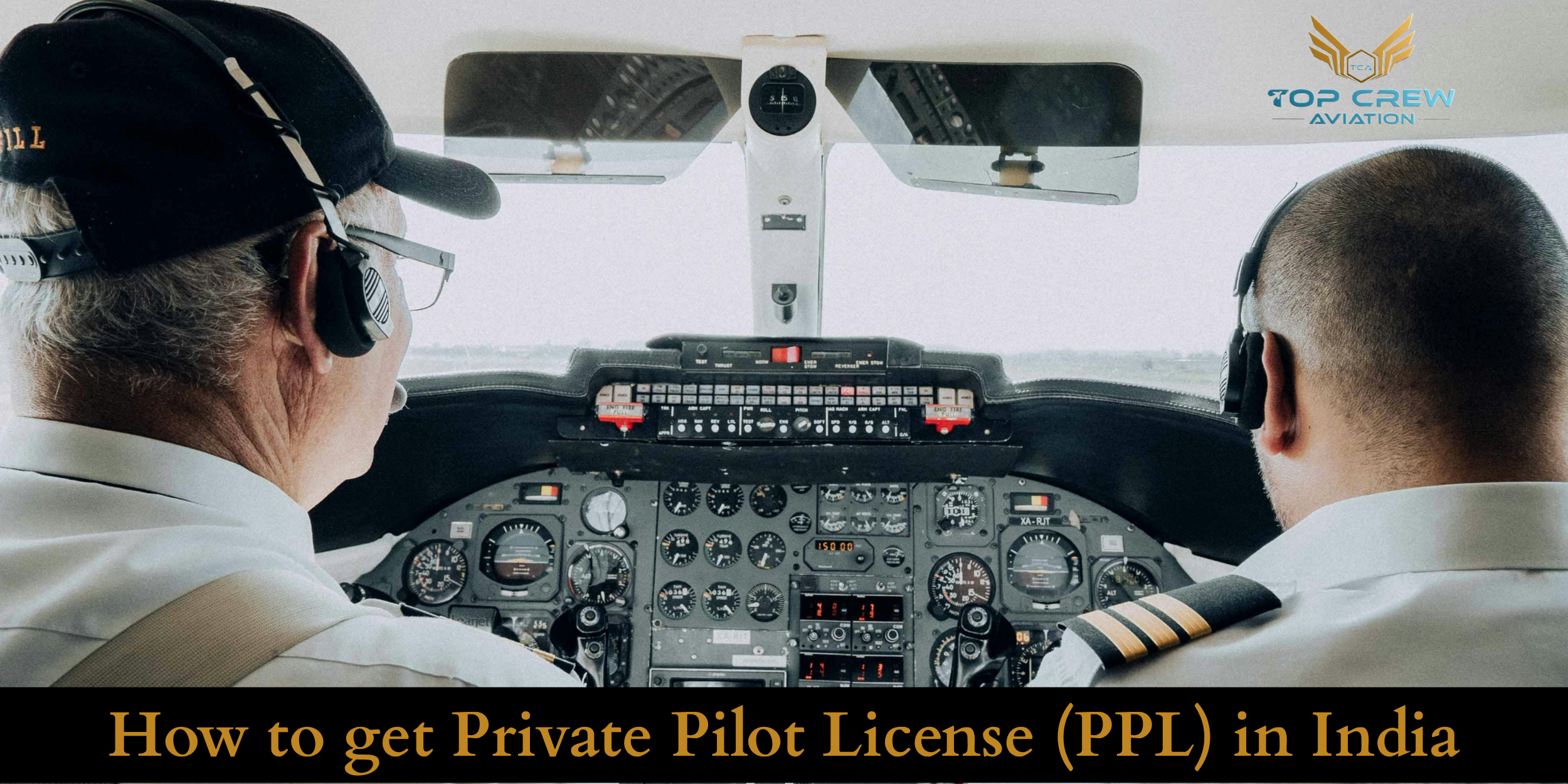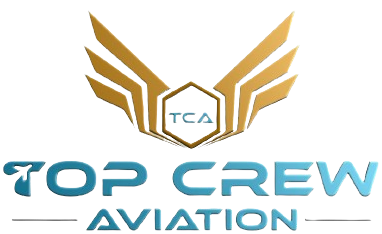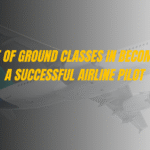
India’s aviation industry is growing fast, and more people are now taking an interest in flying for personal and recreational purposes. If you dream of flying your aircraft or simply want to experience the skies as a private pilot, then getting a Private Pilot Licence (PPL) is the right choice for you.
A PPL is a license that allows you to fly non-commercial aircraft. This means you can’t work as a paid pilot, but you can fly your own or rented aircraft for personal use. Whether you want to pursue aviation as a hobby or use this license as a stepping stone to become a commercial pilot later, the PPL is your first big step.
In this complete guide, we’ll explain everything about how to get your PPL license in India, including eligibility, admission process, subjects, training, and more.
What is a Private Pilot License (PPL)?
A Private Pilot Licence (PPL) is a license issued by the Directorate General of Civil Aviation (DGCA) in India that permits the holder to fly an aircraft for personal use. It is not valid for commercial flying, meaning you cannot be paid for flying with a PPL. However, it is ideal for flying as a hobby or for personal travel.
The Private Pilot License (PPL) Course is typically 6 to 8 months long and encompasses both theoretical and flight training. Many aviation lovers pursue this license to fly private aircraft or use it as preparation for a career as a commercial pilot.
Benefits of Having a Private Pilot License (PPL)
Having a Private Pilot License (PPL) gives you the freedom to fly a personal aircraft for leisure or travel within India. It’s ideal for those who are passionate about aviation but don’t want to fly commercially. Many students also use it as a starting point before moving on to professional training for a Commercial Pilot License (CPL). With a PPL, you not only enjoy the thrill of flying but also build essential skills and confidence in handling aircraft.
Key Benefits of a PPL License:
- Fly a private aircraft legally across India.
- Ideal for hobby flyers and aviation enthusiasts
- Builds a strong foundation for CPL training
- Helps you explore aviation before choosing it as a full-time career
- This license is ideal for individuals who want to experience aviation without committing to commercial pilot training immediately.
Step-by-Step Guide to Get a PPL License in India
Let’s break down the process of getting a Private Pilot License (PPL) in India step by step. Each step is crucial and must be followed correctly for a successful licensing process.
Step 1: Meet the Eligibility Criteria
Before applying for the PPL course, make sure you meet the basic eligibility requirements. These are important for safety and ensure you can handle the training process.
Eligibility Conditions:
- You must have passed Class 10 from a recognized board.
- A minimum of 50% marks in Class 10 is usually required.
- You must have basic knowledge of Physics and Mathematics.
- The minimum age should be 17 years.
- You must be physically and mentally fit and pass the DGCA-approved Class II medical test.
- The upper age limit is generally 60 to 65 years.
Step 2: Clear the Required Medical Test
Before you can begin flying training, you must clear the DGCA Class II medical test. This ensures you are healthy and fit for flying. The test checks your:
- Eyesight (you can wear glasses)
- Hearing
- Heart health
- Mental well-being
- Overall physical condition
Later in the course, you might also need to clear Class I medical if you plan to continue with commercial flying in the future.
Step 3: Apply to a DGCA-Approved Flying School
Once you meet the eligibility and pass your medicals, the next step is to apply for admission to a DGCA-approved flying school in India. These institutes offer structured PPL training programs under DGCA guidelines.
Some of the top flying schools in India include:
- Indira Gandhi Institute of Aeronautics – Punjab
- Top Crew Aviation – Jaipur
- Indira Gandhi Institute of Aviation Technology – Delhi
- Indira Gandhi Institute of Flight Safety – Delhi
- Madhya Pradesh Flying Club – Indore
Tip: You can apply to multiple institutes through centralized exams, such as AME CET, for better options based on your rank.
Step 4: Clear the Entrance Exam
While many schools admit students on a merit basis, others might require you to clear an entrance exam. One of the popular entrance exams is:
- AME CET (Aircraft Maintenance Engineering Common Entrance Test)
Through AME CET, you can get admission to top aviation colleges across India based on your All India Rank (AIR). It also offers scholarships to top performers.
Step 5: Begin Your Ground School Training
Once you’re admitted, your training starts with ground school – the theory part of flying. This is where you learn the basic rules, science, and procedures of aviation. These topics are essential for understanding how aircraft work and how to operate them safely.
Subjects Covered in Ground School:
- Air Regulations
- Aviation Meteorology
- Air Navigation
- Aircraft General Knowledge
- Flight Planning
- Human Performance and Limitations
- Radio Telephony
- Principles of Flight
These classes are taught by experienced instructors and are followed by written exams conducted under the supervision of the DGCA.
Step 6: Complete the Required Flying Hours
After completing the theory part, the real fun begins — practical flying!
You will now take control of an aircraft under the supervision of a flight instructor. To get a PPL, you must complete at least 40 to 60 flying hours, which include:
- Dual Flights (with an instructor)
- Solo Flights
- Cross-Country Flights
- Night Flying
- Emergency Procedures
- Short Field and Soft Field Takeoffs and Landings
You’ll be trained in basic flight maneuvers, safe takeoffs and landings, handling emergencies, communication with air traffic control, and flight planning.
Step 7: Pass the DGCA Exams and Flight Check
To get your Private Pilot License (PPL) in India, you must clear some important exams and a final flying test. These tests are conducted by the DGCA (Directorate General of Civil Aviation). They check if you understand the rules of flying, weather, navigation, and how an aircraft works. After your ground school and flight training, you need to prove both your knowledge and flying skills. The last step is a flight test with an examiner approved by the DGCA. This test is called a “Check Ride.” Once you pass all these exams, you become eligible to get your PPL and fly private aircraft legally in India.
You will need to pass:
- DGCA Written Exams for subjects like Air Navigation, Meteorology, Air Regulation, and Aircraft Technical General
- Oral Tests on aviation rules and real-life scenarios
- Check Ride (Flight Test) with a DGCA-approved examiner to demonstrate your flying skills
Once you successfully pass all written and flying assessments, you become eligible to receive your PPL.
Step 8: Receive Your Private Pilot License (PPL)
After completing all the above steps, the DGCA will issue your PPL, which is valid for a specific period (usually 5 years). You can now legally fly a private aircraft across India, following air regulations.
You can also renew your license by undergoing a medical recheck and proving recent flying activity.
Course Curriculum: What You Will Learn in PPL Training
The Private Pilot License (PPL) training program is designed to teach you all the essential skills needed to fly a private aircraft safely and confidently. The course includes both ground theory and practical flying lessons. During your training, you will gain a strong understanding of how aircraft work, how to plan and manage flights, and how to handle different situations in the sky.
You’ll begin with the basics of flying, learning how to control an aircraft and understand its parts and systems. Communication with Air Traffic Control (ATC) is another key skill you’ll practice regularly. You will also learn to read maps, plan flight routes, and use flight instruments effectively. Emergency procedures and safety checks are an important part of the training to ensure you’re prepared for unexpected situations. You’ll also master takeoffs and landings in different weather and airport conditions.
Key Topics Covered in PPL Training:
- Basics of aircraft control and flying
- Aircraft systems and maintenance checks
- Radio communication with ATC
- Navigation, map reading, and flight planning
- Use of flight instruments
- Emergency handling and safety procedures
- Air traffic patterns
- Takeoffs and landings in varied conditions
PPL Course Fees in India
The cost of PPL training varies depending on the flying school and city. On average, the course fees range between:
- ₹6 lakhs to ₹10 lakhs
This fee usually includes ground classes, flying hours, instructor fees, simulator time, and exam costs.
Top Flying Schools in India for PPL
If you’re looking for some of the best DGCA-approved institutes for PPL training, consider:
| Institute Name | Location |
|---|---|
| Indira Gandhi Institute of Aeronautics | Punjab |
| Top Crew Aviation | Jaipur (Rajasthan) |
| Madhya Pradesh Flying Club | Indore |
| Government Aviation Training Institute | Bhubaneswar |
Career After PPL: What Next?
While a PPL only allows you to fly for personal use, many students choose to upgrade to a Commercial Pilot License (CPL). Here’s how PPL helps your aviation career:
- Builds a strong foundation for CPL training
- Helps you gain confidence and flight experience
- You can rent aircraft and fly for leisure or family trips
- You can pursue recreational flying, join an aero clubs, or participate in aviation sports
Important Tips for PPL Aspirants
- Start preparing early by studying Physics and Math
- Focus on improving your English and communication skills
- Choose DGCA-approved institutes only
- Take demo classes or air experience flights if unsure
- Maintain good physical health and clear your medicals
- Stay consistent with your theory and flying sessions
Conclusion
Getting a Private Pilot License (PPL) in India is an exciting journey that opens the skies for you. It gives you the power to fly personal aircraft and is the first step toward a professional aviation career if you choose to pursue one. With the proper training, discipline, and passion for flying, you can earn your wings and take control of the skies.
Whether you dream of becoming a commercial pilot or just want to enjoy flying as a hobby, now is the time to begin your aviation journey.
Url Suggestion:-
Frequently Asked Questions
No FAQs found.



